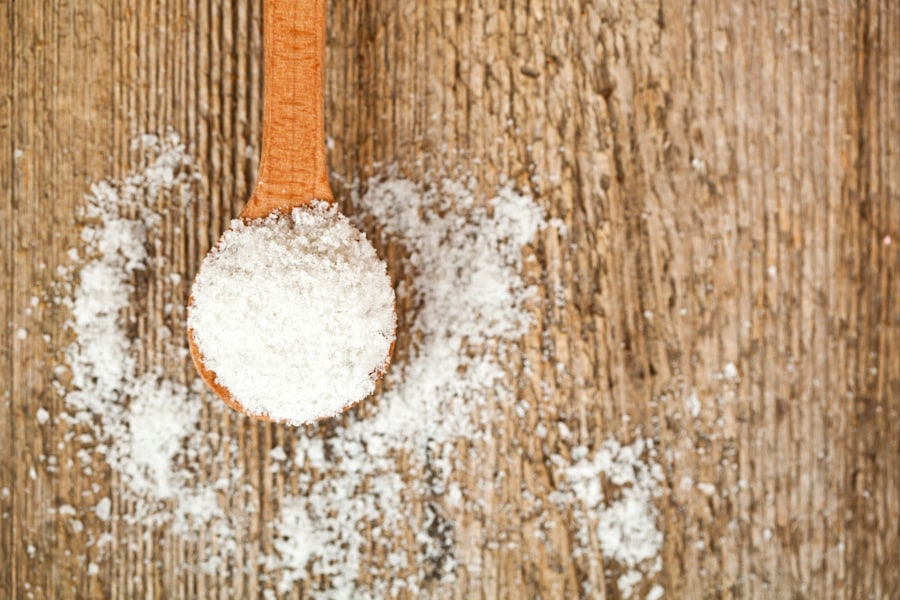When you consume sugar, your body undergoes a series of complex biochemical reactions. Initially, sugar provides a quick source of energy, leading to a spike in your blood glucose levels. This rapid increase triggers the release of insulin, a hormone that helps regulate blood sugar.
However, this process can lead to a rollercoaster effect, where your energy levels surge and then plummet, leaving you feeling fatigued and craving more sugar. Over time, excessive sugar intake can contribute to insulin resistance, a condition that can lead to type 2 diabetes and other metabolic disorders. Moreover, sugar can have profound effects on your mood and mental health.
You may notice that after consuming sugary foods, you experience a temporary boost in happiness or energy, often referred to as a “sugar high.” However, this is typically followed by a crash that can leave you feeling irritable or anxious. Research has shown that high sugar consumption is linked to an increased risk of depression and anxiety disorders.
Key Takeaways
- Sugar can have negative effects on the body, including weight gain, increased risk of chronic diseases, and energy crashes.
- A 7-day sugar detox meal plan should include plenty of fruits, vegetables, lean proteins, and healthy fats to help stabilize blood sugar levels.
- Stocking your pantry with sugar-free alternatives like stevia, monk fruit, and unsweetened nut butters can help you stay on track during a sugar detox.
- Overcoming sugar cravings can be achieved by staying hydrated, getting enough sleep, and finding healthy substitutes for sugary treats.
- Exercise is an important part of a sugar detox plan, as it can help reduce cravings, improve mood, and support overall health and well-being.
Creating a Meal Plan for the 7-Day Sugar Detox
As you prepare for your 7-day sugar detox, creating a structured meal plan can be incredibly beneficial. Start by outlining your meals for each day, focusing on whole foods that are naturally low in sugar. Incorporate plenty of vegetables, lean proteins, and healthy fats into your diet.
For breakfast, consider options like scrambled eggs with spinach or a smoothie made with unsweetened almond milk and berries. These meals will provide you with sustained energy without the sugar crash. For lunch and dinner, aim for balanced plates that include a variety of nutrients.
Grilled chicken or fish paired with quinoa and steamed broccoli can be both satisfying and nutritious. Don’t forget to include healthy snacks throughout the day to keep your energy levels stable. Nuts, seeds, and raw vegetables with hummus are excellent choices that will help curb cravings without adding unnecessary sugars.
By planning your meals in advance, you set yourself up for success and make it easier to stick to your detox goals.
Stocking Your Pantry with Sugar-Free Alternatives

To successfully navigate your sugar detox, it’s essential to stock your pantry with sugar-free alternatives that will support your new eating habits. Begin by removing any sugary snacks or processed foods that may tempt you during this period. Instead, fill your shelves with whole foods such as fresh fruits, vegetables, whole grains, and lean proteins.
These items will not only nourish your body but also help you feel full and satisfied. In addition to whole foods, consider incorporating sugar-free substitutes into your pantry. Natural sweeteners like stevia or monk fruit can be great alternatives for recipes that require a touch of sweetness without the added sugars.
You might also want to explore sugar-free condiments and sauces, such as mustard or homemade salad dressings made from olive oil and vinegar. By having these alternatives readily available, you can easily prepare meals and snacks that align with your detox goals while still enjoying flavorful dishes.
Tips for Overcoming Sugar Cravings
| Tip | Description |
|---|---|
| Awareness | Recognize triggers and patterns that lead to sugar cravings. |
| Healthy Substitutes | Replace sugary snacks with fruits, nuts, or yogurt. |
| Protein and Fiber | Include protein and fiber in meals to stay full and reduce cravings. |
| Stay Hydrated | Drink plenty of water to curb cravings and stay hydrated. |
| Manage Stress | Find healthy ways to manage stress to avoid emotional eating. |
Sugar cravings can be one of the most challenging aspects of a sugar detox. When you feel the urge to reach for something sweet, it’s important to have strategies in place to combat those cravings effectively. One effective method is to distract yourself with an activity that keeps your mind and hands busy.
Whether it’s going for a walk, reading a book, or engaging in a hobby, redirecting your focus can help diminish the intensity of the craving. Another helpful tip is to ensure you’re eating enough throughout the day. Sometimes cravings arise from hunger rather than a genuine desire for sugar.
By consuming balanced meals and snacks that include protein, healthy fats, and fiber, you can keep your blood sugar levels stable and reduce the likelihood of cravings. Additionally, staying hydrated is crucial; sometimes thirst can be mistaken for hunger or cravings. Keep a water bottle handy and sip throughout the day to help curb those sweet urges.
Incorporating Exercise into Your Sugar Detox Plan
Exercise plays a vital role in supporting your sugar detox journey. Not only does physical activity help burn off excess energy from any sugar consumed, but it also promotes the release of endorphins—your body’s natural mood lifters. Aim to incorporate at least 30 minutes of moderate exercise into your daily routine.
This could include activities like brisk walking, cycling, or even dancing in your living room. In addition to cardiovascular exercise, consider adding strength training to your regimen. Building muscle can enhance your metabolism and help regulate blood sugar levels more effectively.
You don’t need a gym membership; bodyweight exercises like push-ups, squats, and lunges can be done at home with little to no equipment. By making exercise a regular part of your detox plan, you’ll not only improve your physical health but also boost your mental resilience against sugar cravings.
Seeking Support and Accountability

Embarking on a sugar detox can be challenging, but seeking support from friends or family can make the journey much easier. Share your goals with those close to you and ask for their encouragement as you work towards reducing your sugar intake. Having someone to talk to about your struggles and successes can provide motivation and accountability when you need it most.
You might also consider joining online communities or local groups focused on healthy eating or detoxing from sugar. Engaging with others who share similar goals can offer valuable insights and tips while fostering a sense of camaraderie. Whether it’s through social media platforms or dedicated forums, connecting with others on this journey can help you stay committed and inspired.
Identifying Hidden Sugars in Processed Foods
As you navigate your sugar detox, it’s crucial to become adept at identifying hidden sugars in processed foods. Many products marketed as “healthy” or “low-fat” often contain added sugars that can sabotage your efforts. Start by reading ingredient labels carefully; look for terms like high fructose corn syrup, cane sugar, or any ingredient ending in “-ose,” which indicates the presence of sugars.
Additionally, be cautious with seemingly innocent items like sauces, dressings, and even bread. Many of these products contain added sugars that can accumulate quickly in your diet without you even realizing it. By becoming more aware of what you’re consuming and opting for whole foods whenever possible, you’ll be better equipped to avoid hidden sugars and stay on track with your detox.
Mindful Eating and Sugar Detox
Practicing mindful eating can significantly enhance your sugar detox experience. This approach encourages you to pay attention to what you’re eating and how it makes you feel physically and emotionally. Start by slowing down during meals; take the time to savor each bite and appreciate the flavors and textures of your food.
This practice not only enhances enjoyment but also helps you recognize when you’re full. Additionally, consider keeping a food journal during your detox period. Documenting what you eat can help you identify patterns in your cravings and emotional triggers related to sugar consumption.
By reflecting on these insights, you can develop healthier coping mechanisms and make more conscious choices about what you eat moving forward.
Hydration and Its Role in Sugar Detox
Staying hydrated is an often-overlooked aspect of a successful sugar detox. Water plays a crucial role in various bodily functions, including digestion and metabolism. When you’re well-hydrated, you’re less likely to confuse thirst with hunger or cravings for sweets.
Herbal teas or infused water with slices of lemon or cucumber can also be refreshing alternatives if plain water feels monotonous. These options not only keep you hydrated but can also provide additional health benefits without added sugars.
By prioritizing hydration during your detox journey, you’ll support your body’s natural processes while helping to curb those pesky sugar cravings.
Managing Withdrawal Symptoms During the Sugar Detox
As you reduce your sugar intake, it’s common to experience withdrawal symptoms as your body adjusts to lower levels of sugar consumption. You may encounter headaches, fatigue, irritability, or mood swings during this transition period. Understanding that these symptoms are temporary can help you stay committed to your detox plan.
To manage withdrawal symptoms effectively, ensure you’re eating balanced meals that provide adequate nutrients and energy throughout the day. Incorporating magnesium-rich foods like leafy greens or nuts can help alleviate headaches and muscle tension associated with withdrawal. Additionally, practicing relaxation techniques such as deep breathing or meditation can help ease irritability and promote emotional well-being during this challenging time.
Celebrating Success and Maintaining a Sugar-Free Lifestyle
As you complete your 7-day sugar detox, take time to celebrate your achievements—no matter how small they may seem! Acknowledging your progress reinforces positive behavior changes and motivates you to continue on this path toward a healthier lifestyle. Consider treating yourself to something non-food-related as a reward for completing the detox; perhaps a new book or a relaxing spa day.
Maintaining a sugar-free lifestyle after the detox requires ongoing commitment and mindfulness about what you consume. Continue to prioritize whole foods while being vigilant about hidden sugars in processed items. Remember that occasional indulgences are perfectly fine; the key is moderation rather than deprivation.
By integrating these practices into your daily life, you’ll not only feel better physically but also cultivate a healthier relationship with food long-term.
If you’re considering a sugar detox plan to improve your health, you might find it helpful to explore additional resources that offer guidance on maintaining a balanced diet. One such resource is an article on Explore Senior Health, which provides valuable insights into healthy eating habits and lifestyle changes that can complement your detox efforts. For more information, you can read the article by visiting Explore Senior Health. This site offers a wealth of information that can support your journey towards a healthier lifestyle.
FAQs
What is a sugar detox plan?
A sugar detox plan is a structured program designed to help individuals reduce their intake of added sugars and reset their taste buds to crave less sweet foods. It typically involves eliminating or significantly reducing sources of added sugars from the diet for a period of time.
Why do people do a sugar detox?
People may choose to do a sugar detox to reduce their sugar cravings, improve their overall health, manage their weight, and reduce their risk of chronic diseases such as diabetes and heart disease. Some individuals may also use a sugar detox as a way to break free from a cycle of overconsumption of sugary foods.
What are the potential benefits of a sugar detox plan?
Potential benefits of a sugar detox plan may include improved energy levels, better mood and mental clarity, reduced risk of chronic diseases, improved dental health, and better weight management. It may also help individuals develop a healthier relationship with food and reduce their reliance on sugary snacks.
What are some common guidelines for a sugar detox plan?
Common guidelines for a sugar detox plan may include eliminating or reducing sources of added sugars such as sugary beverages, processed foods, desserts, and sweet snacks. It may also involve focusing on whole, unprocessed foods, increasing intake of fiber-rich foods, and staying hydrated. Some plans may also include a gradual reintroduction of natural sugars from fruits after the initial detox period.
Is a sugar detox plan safe for everyone?
While a sugar detox plan can be safe for many individuals, it’s important to consult with a healthcare professional before making significant changes to your diet, especially if you have any underlying health conditions or are pregnant or breastfeeding. Individuals with diabetes or other medical conditions should approach a sugar detox plan with caution and under the guidance of a healthcare provider.
